

Can wild flowers attract more pollinating insects into our apple & pear orchards?
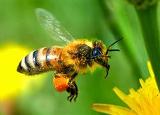
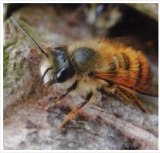
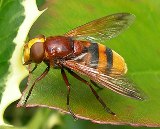

Above: from the left - Honey bee; - Solitary bee; - Hoverfly; and Bumble bee:
Planting wild flowers within the orchard seems a logical way to improve pollination, benefiting yield and quality.........is that true?
Below: 'yesterdays orchard'
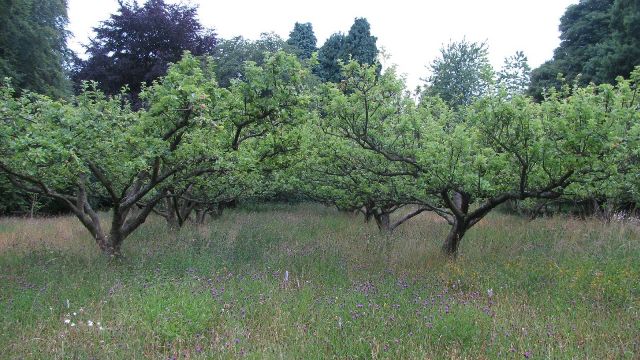 In days gone by, when orchards were less intensive, wild flowers would often be be naturally integral to the orchard habitat.
In days gone by, when orchards were less intensive, wild flowers would often be be naturally integral to the orchard habitat.
Today intensification of orchards required to achieve the yields and quality demanded by the consumer and changes in orchard management, means orchards are unlikely to host wild flowers without introduction by the grower.
In the days before weedkillers became part of orchard management, orchards were very similar to the one in the picture, although the grass would be mown either by gang mower, or with the development of the 'hayter mower' with 'mowing machine' blades situated on the 4 corners of each spinning plate.
I spent many an hour sharpening the blades with a file in my youth, before the advent of the cutter bar which is still the standard on many of today's mowers.
Below: a bagging hook - we generally referred to it as a 'swop'
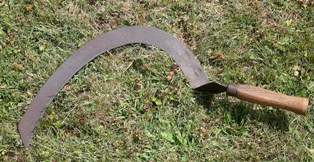 Around the base of established trees, various weeds - 'nettles, docks, thistles etc. would be dealt with by a scythe or bagging hook. Hard back aching work; labour was cheap in those day (post war - 1960's) and apple growing very profitable.
Around the base of established trees, various weeds - 'nettles, docks, thistles etc. would be dealt with by a scythe or bagging hook. Hard back aching work; labour was cheap in those day (post war - 1960's) and apple growing very profitable.
I well remember my Uncle on his fruit farm at Benenden in Kent took great pride in the appearance of his orchards; the grass was mown frequently with gang mowers and around each tree, ladies weeded the area untouched by the gang mower as if it was his garden....in fact his orchards looked just like an extension of his garden!
Father also loved the orchard mown with the gang mowers, but around the tree, it was me and the farm staff who kept the weeds under control with a bagging hook!
Below: a set of gang mowers - and - Phytopthora rot
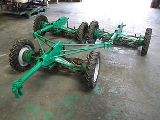
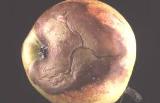 The intensification and the ability to keep the soil beneath the trees weed free with Herbicides led to the format of single, or multi row blocks of trees kept weed free by the weedkillers. The great benefit from no weed competition was the reduction in nitrogen fertilizer required. Indeed it was fashionable for 'a short period' to kill off all the weeds in the orchard before the practice was dropped. Today the weed free strip beneath the tree is maintained by herbicides which are much more sympathetic to the soil and the practice of letting the weeds grow in the strip as harvest approaches, reduces the splash of rain from soil to the low lying fruit, risking phytophthora syringae infection.
The intensification and the ability to keep the soil beneath the trees weed free with Herbicides led to the format of single, or multi row blocks of trees kept weed free by the weedkillers. The great benefit from no weed competition was the reduction in nitrogen fertilizer required. Indeed it was fashionable for 'a short period' to kill off all the weeds in the orchard before the practice was dropped. Today the weed free strip beneath the tree is maintained by herbicides which are much more sympathetic to the soil and the practice of letting the weeds grow in the strip as harvest approaches, reduces the splash of rain from soil to the low lying fruit, risking phytophthora syringae infection.
Fast forward to 2016....
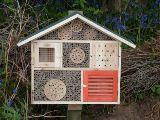 Over the last 20 years, growers have adopted a number of strategies to increase the numbers and habitats for beneficial insects....many have planted wildflower strips around the headlands of orchards creating excellent habitats.........bee hotels have also become widespread on fruit farms..........
Over the last 20 years, growers have adopted a number of strategies to increase the numbers and habitats for beneficial insects....many have planted wildflower strips around the headlands of orchards creating excellent habitats.........bee hotels have also become widespread on fruit farms..........
Below: wildflower strips (2 metres wide) around orchards create a valuable habitat for beneficial insects
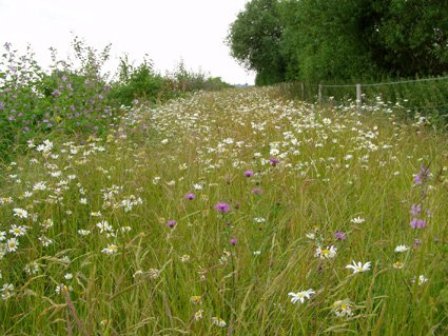
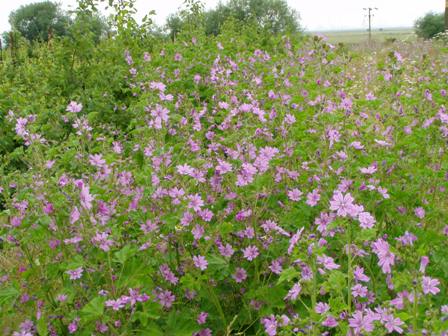
At the recent EMR Tree Fruit Day, Megan McKerchar presented the preliminary results of 'the effect of wildflower strips in orchards on pollination services'
Megan's presentation focus's on the influence wildflowers growing in the orchard alleyway can have on pollination efficacy and fruit quality...............
The project objectives; Habitat creation - Pollinator and natural enemy diversity and abundance - Pollination and pest regulation service - Cost benefit analysis.
Finding the environmental balance and a productive tree/orchard, requires removing competition from 'weeds' under the tree (around the roots) and this is especially important in the formative years of a young orchard. As the orchard matures, inevitably weed competition will invade the 'strip' beneath the tree - this is acceptable as long as the invasive weeds can be controlled without affecting the vigour of the tree..
Below: A young orchard with a weed free strip - and - a mature orchard with some weed invasion in late summer
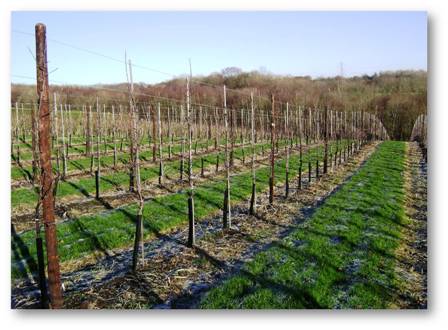
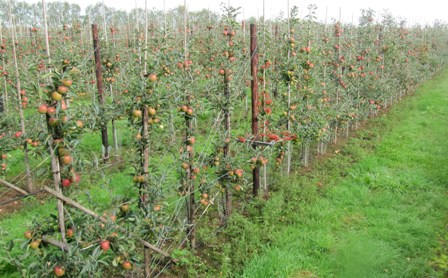
Project Objectives
Returning to the project objectives; Habitat creation - Pollinator and natural enemy diversity and abundance - Pollination and pest regulation service - Cost benefit analysis.
Megan outlined the 'differing' structures, native, perennial, wild seed types using a staggered flowering period with the wildflowers sown between March-April 2013 and August 2013.
Below: Knapweed - Centaurea nigra; - Lady's bedstraw - Galium verum; - Rough hawkbit - Leontodon hispidus;
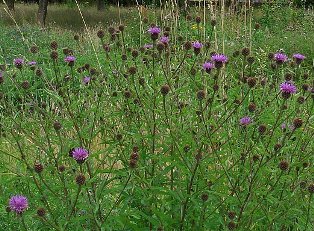
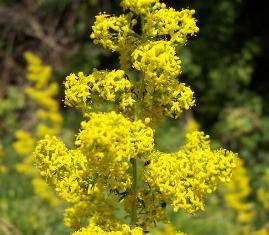
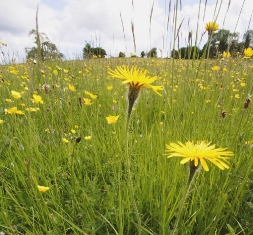
Selfheal - Prunella vulgaris; - Oxeye daisy - Leucanthemum vulgare; - Orchard grass - Dactylis glomerata.
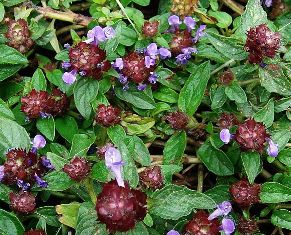
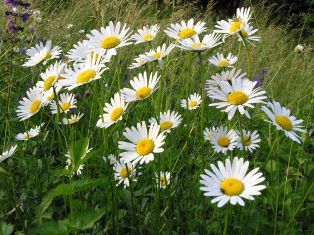
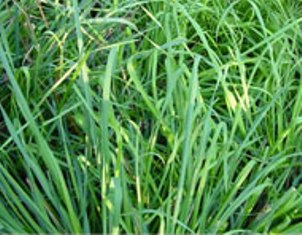
Yarrow - Achillea millefolium; - Red Clover - Trifolium pratense.
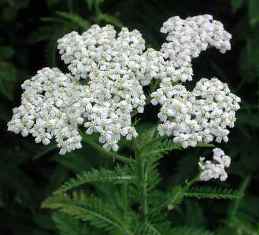
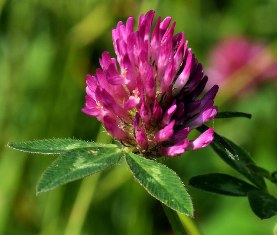 The project measured pollinator visitation in 30 minute periods to evaluate the influence of wildflowers planted in the alleyways to see if the visitations were higher in the trial area v the control area.
The project measured pollinator visitation in 30 minute periods to evaluate the influence of wildflowers planted in the alleyways to see if the visitations were higher in the trial area v the control area.
The trial area and the control area were situated 150 metres apart.
Apple Blossom Visitation and Pollinator Visitation; the data indicated pollinating insects visiting the apple blossom were divided into - 47% Honey Bees; 30% Solitary Bees; 21% Bumble Bees; 2% Hoverflies.
Attributes influenced by pollination on Jazz & Braeburn
Positive influence on fruit size and weight for Jazz & Braeburn; no positive influence on brix (sugar) for Jazz but positive influence for Braeburn; Firmness and seed numbers improved in both Jazz & Braeburn; no improvement in dry weight matter; thinning gave positive results for Jazz & Braeburn; some positive influence on fruit mineral levels - Ca, N, Mg on Jazz slight improvement in shape for Breaburn.
Wildflower Effect on Jazz Insect Pollinated Fruit
In year 2013, initial decrease of 1-2mm in wildflower plot, no effect in 2013/2014
Wildflower Effect on Braeburn Insect Pollinated Fruit, adding 1mm on average in 2014 & 2015 (not significant)
Jazz Fruit Yield affected by pollination - Thinned: 3 pollination modes - Hand, Open, Excluded: hand pollinated fruit gave the best yields.
Fruit quality affected by pollination e.g. Jazz - Hand, Open, Excluded: seed count and size best for hand pollinated fruit - fruit firmness less in hand pollinated fruit.
Increase/decrease of beneficial and non-beneficial insects?
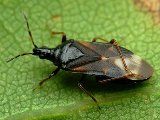
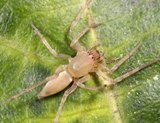 Wildflowers increased Anthocorids on trees - Wildflowers increased Clubionidae spiders
Wildflowers increased Anthocorids on trees - Wildflowers increased Clubionidae spiders
Wildflowers reduced rosy aphid in 2015 - Fewer ants on trees in wildflower plot (might be due to wildflowers or less aphids) - Anthocorids, also known as Pirate Bugs, are abundant predators of aphids and thrips. They also feed on young scales, and spider mites. -- Clubionidae spiders; Small pests such as thrips, midges and aphids may die because of being caught in the web even though the spider has no interest in eating the catch!
Pollination Efficiency
Conclusions - Wildflowers enhanced beneficial insects & spiders - Increased wild pollinator visitation
Increased hoverfly diversity - Increased anthocorid bugs and clubionid spiders - Decreased rosy aphids and
ants - Pollination affects fruit quality - No significant negative or positive affect of wildflowers on fruit quality after year 1.
Below: Simon Bray's award winning Gala orchard, with straw mulch beneath the trees and clover sown in the alley ways - and - a pear orchard with abundant wildflower in the alley ways.
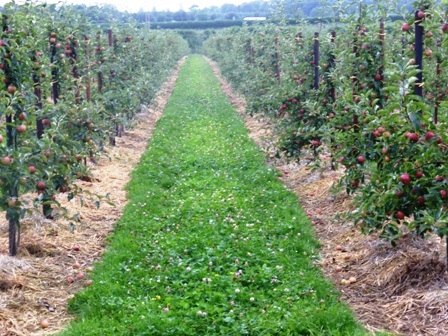
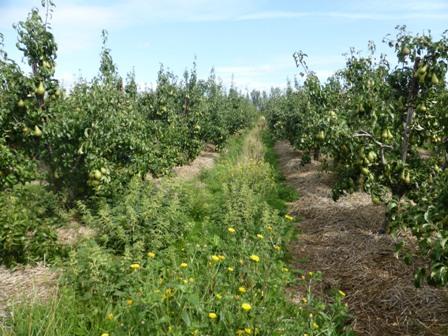
English Apple Man Comments:
Over the last 50 years orchard management practices have changed as circumstances dictated - in those far off halcyon days when profit was easily achieved, life was very different. As global competition challenged our industry with visually superior fruit, growers had to find ways to match the visual image of imports and this drove many changes in growing practices as profitability fell; like many industries we have gone through a painful process of cutting costs while increasing yields and quality; initially these practices were driven by chemical intervention - fungicides, insecticides and herbicides. As our scientists developed a greater understanding of the 'positive and negative' influences of pesticides and the ability of predators to supplement, or even replace a chemical solution, the IPM (Integrated Pest Management) approach has changed dramatically the orchard management.
The very important research Megan and her colleagues at East Malling Research have been pursuing will further our knowledge and allow even better 'future' orchard practices.
That's it for this week.....not sure yet what next week's Journal will report on, but if the weather improves (it was spring like down by the coast in East Sussex today) I will be finding my way into some orchards to see how the trees are progressing...............
Take care
The English Apple Man